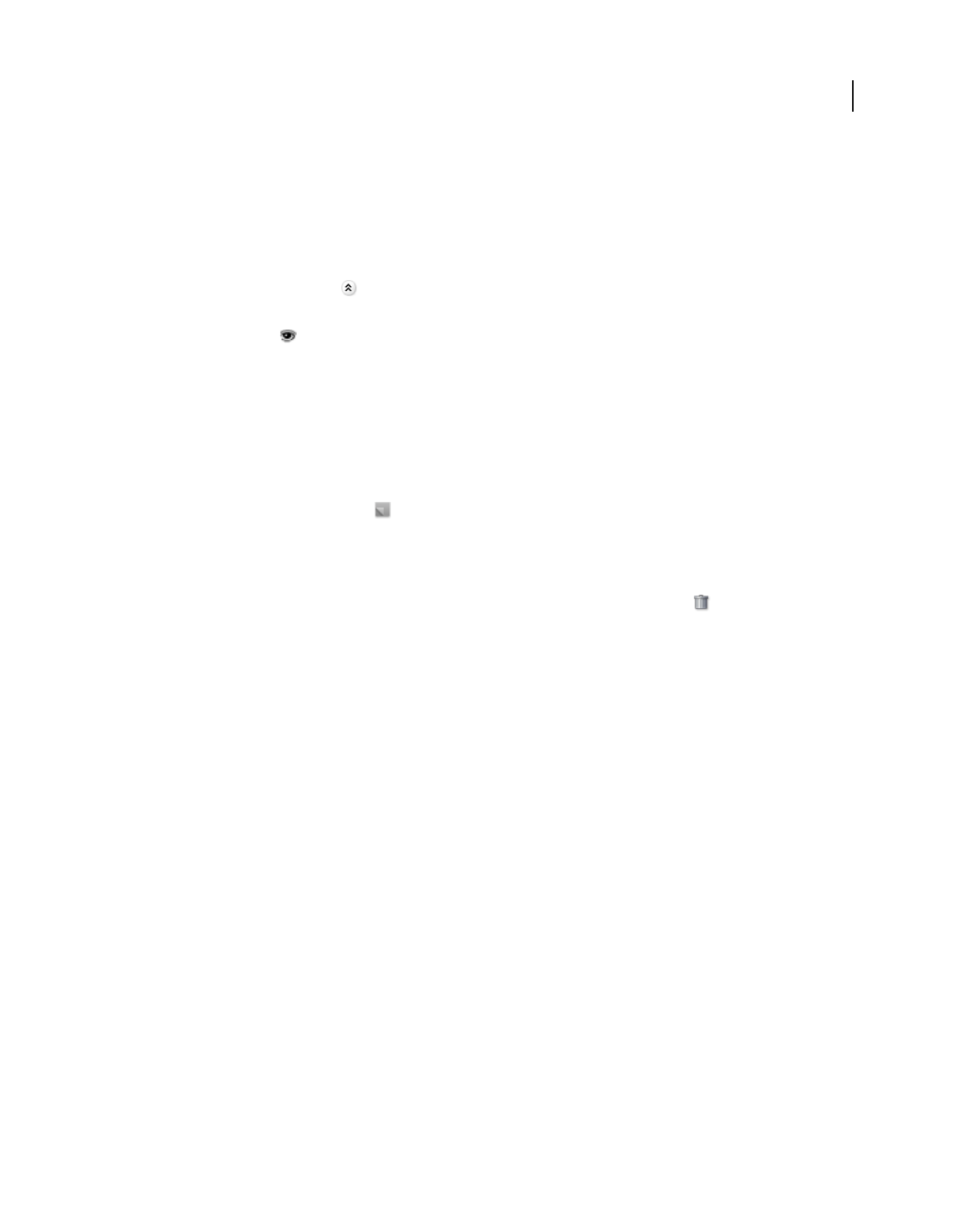
180
USING PHOTOSHOP ELEMENTS 8
Filters, effects, styles, and artwork
Last updated 7/26/2011
4 If available, select the Preview option to preview the filter in the document window. Depending on the filter and
how you are applying it, use one of the following methods to preview the filter:
• Use the + button or - button under the preview window to zoom in or zoom out.
• Click the zoom bar (where the zoom percentage appears) to choose a zoom percentage.
• Click-drag within the preview window to center a specific area of the image in the window.
• Click the Show/Hide button at the top of the dialog box to hide the filter thumbnails. Hiding the thumbnails
expands the preview area.
• Click the eye icon next to a filter to hide the effect in the preview image.
5 If the dialog box contains sliders, hold down Option while dragging a slider to see a real-time preview (real-time
rendering).
6 Click in the image window to center a specific area of the image in the preview window. (This may not work with
all preview windows.)
Note: A blinking line beneath the preview size indicates that the preview is being rendered.
7 If you are using the Filter Gallery, or the filter opens in the Filter Gallery, do any of the following and click OK:
• Click the New Effect Layer button at the bottom of the dialog box and choose an additional filter to apply. You
can add multiple effect layers to apply multiple filters.
• Rearrange applied filters by dragging a filter name to another position in the list of applied filters at the bottom of
the dialog box. Rearranging the order of filters can dramatically change the way your image looks.
• Remove applied filters by selecting the filter and clicking the Delete Effect Layer button .
8 If you are using a Filter command or the Effects panel, do one of the following and click OK:
• Double-click the filter.
• Drag the filter onto the image.
More Help topics
“Using the Effects panel” on page 173
Filter categories
You can apply the following categories of filters:
Adjustment filters Change the brightness values, color, grayscale range, and tonal levels of pixels in an image. Convert
color pixels into black and white.
Artistic filters Simulate a painterly appearance on traditional media, and create a unique look.
Blur filters Soften a selection or an image. Useful for retouching.
Brush Stroke filters Give a painterly or fine-arts look using different brush and ink stroke effects.
Distort filters Geometrically distort an image, creating three-dimensional and other reshaping effects.
Noise filters Blend a selection into the surrounding pixels and remove problem areas, such as dust and scratches.
Pixelate filters Sharply define an image or selection by clumping pixels of similar color values.
Render filters Create cloud patterns, refraction patterns, and simulated light reflections.
Sketch filters Add texture for depth or to give a hand-drawn look.
Stylize filters Produce a painted or impressionistic effect by displacing pixels and heightening contrast.
